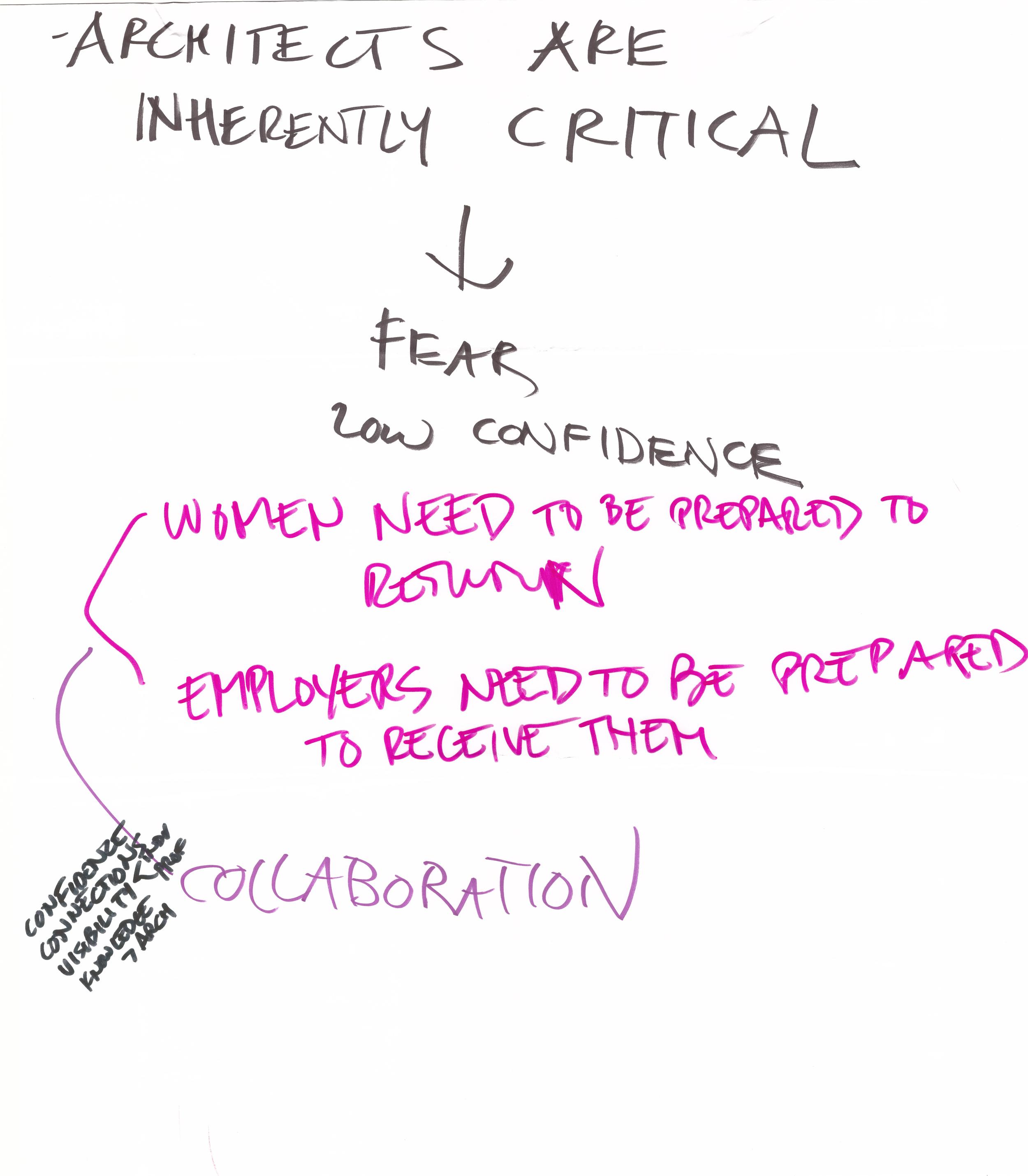By Lilian Asperin Clyman
The situation is: we love our profession but it stands the risk of losing talent, compromises our ability to integrate work with passion and family, and at times feels like a throwback in time. The solution: we are re-designing our design profession. This year at the AIA National Convention, AIA San Francisco’s Equity by Design Committee will be hacking for good. We are gathering as a group to work with the mindset of entrepreneurs; to encourage one another to explore wild and exaggerated ideas, to ask better questions, iterate, self edit, and move quickly. This is all so we can have a spark of curiosity towards what our lives as architects could look like as soon as the first Monday after the Convention. To explore the viability, relevance, and emotional resonance of each idea pitched by teams participating in the Hackathon, our team of jurors will be adopting the mindset of venture capitalists. Which is the idea we think we can get fully behind because we are convinced it’s a game changer?
“How do we disrupt? Where do we focus attention to identify a universal knot to untangle in our industry? What are the lessons we can gain from others outside Architecture or those who are collaborators? Are we able to propose a whole new business case?”
Each one of my fellow Jurors lives by the mantras of “Why Not?”, “Because” and “Together”. Ours are the stories of following intuition first and then pausing to augment that gut feeling with data and discourse, which when sparked by curiosity, lead us to delight. We love to play along the edges of things. We share a passion for working on “firsts” and not being afraid to find the path (or the connections and support network) to move from idea to realization. Our team of Jurors is diverse by design - representing three realms: a practicing Architect, a leader in our allied field of Construction, and an entrepreneur working in a field unrelated to Architecture. Together, we represent a collective and multivalent triad informed by gender, cultural background, and the points of view that emerge from the environments we work in and the work we each do.
Lilian Asperin-Clyman, AIA,LEED AP BD+C
Lilian is an Associate and Project Director at WRNS Studio and Co-Chair of Equity by Design. She is a licensed Architect interested in being part of a multidisciplinary design environment that embodies a culture of collaboration, is connected to the community, takes risks and fosters talent. On March 2013, Lilian attended her first Hackathon. A year later, she organized a Hackathon for MOOCs as part of the SCUP Pacific Regional Conference and the third for last year’s AIA Convention in Atlanta. As Co-Chair of Equity by Design, she is tinkering yet again, this time helping to design the experience for the upcoming 4th Symposium on October 29, 2016.
Anthony Gold
Anthony Gold is a serial entrepreneur, investor, author, advisor, and board member for several companies in the Philadelphia region - both for-profit and non-profit. He began his career designing supercomputers for Unisys, then created an open-source software and services startup that was recognized by the industry as the “largest open source systems integrator in the world.” Anthony was honored to be named one of the Top Leaders in Open Source Business by LinuxWorld magazine. As the co-founder, COO and CTO of ROAR for Good, Anthony is recombining skill with passion in service of social good through the design of ATHENA, a discrete accessory envisioned to protect women from threats to their safety.
Frances Choun
Frances is an established and trusted leader as Vice- President of McCarthy’s Northern Pacific Division. Her visionary leadership has propelled the company forward as one of the largest commercial contracting firms in California. Frances launched her career in Architecture, where she developed an interest in the construction side of the business. As an industry expert, Frances is regularly called upon by local, trade and national media to address new and projected trends, and is considered a pioneer in advancing women in the construction field. Last year, Frances was in the pioneering class of the Equity by Design Hackathon at the AIA Convention in Atlanta. This year, her fervor for hacking continues and she will help us select a winner.
Staying true to the Hackathon format, there will be a winner! To evaluate each team and their proposition of what the Architecture Firm of the future looks like, jurors will be looking through the lenses of: User Experience (human-centered insight), Impact (innovation and relevance), Metrics (plan for action, deployment and evaluation), and Pitch (quality and uniqueness of message). Much like venture capitalists, we will be looking for teams who arrive at new modalities, create emotional resonance, and have a plan that garners our vote.
Join us for the reveal of the EQxD Hackathon: Architecture and the Era of Connections Winner during Happy Hour at Smokin' Betty's (116 South 11th Street) near the Philadelphia Convention Center from 5:30-7:30pm.
Join us for the EQxD Hackathon - WE315 May 18, 1-5pm (Happy Hour Included) or come to EQxD Happy Hour Only - May 18, 5:30-7:30pm
Join us for the EQxD Happy Hour Only - May 18, 5:30-7:30pm
THANKS TO OUR EQxD HACKATHON SPONSORS!
We greatly appreciate our EQxD Hackathon and Happy Hour sponsors for their generous support!











































